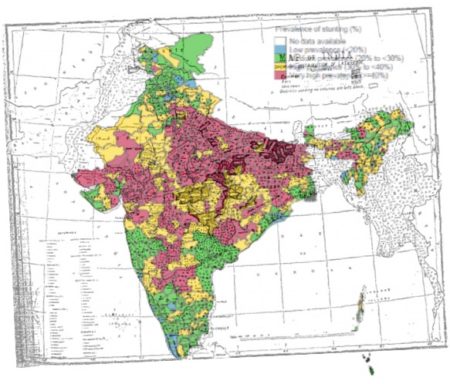In a comment on a recent post on nutrition in India, Dirk Enneking, who should know, suggests that:
In the Central Provinces [of India] there seems to be a close overlap between severe stunting in children and historical neurolathyrism epidemics.
His reference for the latter is a 1927 publication with some pleasantly old-fashioned maps. He may well be onto something. I was able to superimpose the stunting map from the previous post and an image of the 1927 map on the distribution of lathyrism. ((In PowerPoint, if you must know. Don’t judge me.)) This is it:
It’s not great, I know: I haven’t had the time (and don’t have the skills anyway) for the full-blown GIS treatment. But it does seem to be the case that historical areas of lathyrism (darker patches) are confined to areas where stunting is still prevalent (red).
Over to the experts for an explanation.

It’s possible that people on the edge of famine are eating Lathyrus sativus dal as a last resort giving them nutritional stunting plus lathyrism. Anyway, vetch pea sales seem to be totally banned across India now: Food Safety and Standards Authority of India (FSSAI) March 18 2013
We talked about the ban here.
Thanks Luigi – I missed it. What I found seems to be advice from the Government of India for State governments to implement by`gazetting’ (and not, as I said above, an all-India ban). It came with a load of vernacular names, including Chikling vetch.